#history of religions timeline
Video
undefined
tumblr
Explore the importance of Abraham across different religions! Join Monotheist for an insightful journey into the history of Abrahamic faiths—Judaism, Christianity, and Islam. Uncover the shared narratives that unite these diverse religions. #abraham #abrahamicreligions #monotheism #religioushistory #monotheist #interfaithdialogue #faithjourney #spirituality #religions #islam #judaism #christianity #trending #viral
#judaism#religion#abraham#The Significance of Abraham#Abrahmic Religions#History of Abrahmic Religions#Abrahamic Religions#world religion history#history#history of religion#history of religions#religions#religions in global history#religious history#history of religions youtube#history of religions timeline#history of religion in europe#history of religious belief#ancient history#Education#Monotheist#Trending#explore#viral
0 notes
Note
So I spent the better part of the last twenty-four hours scrolling through your blog and your rewrite sounds so cool! Is there like a taglist or something that I can be added to for when you post it? I know it'll take you a while and all but I want to stay updated and whatnot.
wow, thanks so much! i can certainly tag you when new chapters and supporting material are posted. let's just hope it takes fewer than 10 years...
#here's what's gonna happen: i finish rereading books 5-7‚ then really crack down on finishing that masterdoc for the au#the masterdoc will provide a much-needed‚ solid blueprint of what to expect from this project and explain all the changes made in it#it also contains a lot of fun stuff‚ worldbuilding that the canon series missed out on#a full history of erdas‚ the geography and religion of the different lands‚ a calender system and complete timeline of events...#and my favourite part - the character designs!#it's going to be very long. and take just as long to finish#but support from you guys makes it worth it! thank you!#text#asks
2 notes
·
View notes
Text
Everyones so weirded out by me talking about jesus rn, i dont think ive kept my interest in religion this close to my chest this whole time have i? Maybe gnosticism and megachurches are a bit easier to tune out than me talking about the ressurection of jesus but its all the same to me... and the arctic is the same and construction work and utilitarian hedonism as well
#barking#its kinda funny bc it went (2014) im gay -> reading the bible -> atheist youtube -> philosophy -> politics (2015) -> conspiracy theories ->#cults -> theology -> history of religion -> reading the bible -> im gay (2023)#its bit of a lie this timeline bc i liked theology back in middle school as well but for the sake of jokes
9 notes
·
View notes
Text
I wish I lived in the timeline where Christians took Jesus more seriously to the point everyone was basically hippies like he intended.
2 notes
·
View notes
Note
Has Naga ever even tried talking to Grima? That thing you said about them not being part of the natural order just made me think, what if Naga Knows and she's just like, manmade horror beyond comprehension? yeah that's gotta go.
I don't think we really know how much Grima and Naga have interacted outside of their conflicts, to be honest. Considering that she was upset enough about the destruction of Thabes to exile Duma, though, she either didn't know about The Creation in the Labyrinth or didn't consider it threatening enough to warrant razing a major human city. And given that there's a religion founded on the worship of Grima, I think it highly likely that Grima had escaped the labyrinth and made their presence known on the western side of the continent well before Naga and the First Exalt sealed them. So either Naga wasn't paying attention to events west of the border, or she only considered Grima a threat after some tipping point.
I don't recall seeing Grima and Naga interact directly in Awakening, though. Grima clearly has a pretty low opinion of her and her followers, based on how they talk, but Naga never attempts any form of communication with them, either, instead sending Chrom and Co. to take them down. Personally, it strikes me as a pretty mutual dislike.
#answered#anonymous#fire emblem: awakening#canon is pretty spotty on the history in some ways#and i can't accept the timeline's assertion#that grima showed up and was taken down pretty rapidly#because it strains my belief that a religion would pop up#without there being at least some sustained presence#i also don't buy that it was just the cult responsible#it can't be the faith of the realm if the realm doesn't buy in#not for a thousand years#but i'm opinionated
6 notes
·
View notes
Text
oh, to be an aster DMing a coriolis session one day, and then playing in a different one the next!!!!
#coriolisposting#u might say. im a leetle bit excited.#fingers crossed my oneshot group finishes the module!! im excited for them to meet (🤐)#SO much prep to do though.#i love coriolis so much its so brainrot <3#like the amt of time i spend just. looking at published lore?? and losing my mind?#the coriolis universe just has SOOOO much to dig ur teeth into#what do you MEAN there are people who came from a gas giant and are claiming to be gods#what do you MEAN two years ago a new moon just appeared#and the interplay between factions and cultures is just *chefs kiss*#and the timeline makes my head spin. the zenithians only arrived in the third horizon 60 years ago???#the third horizon was separated from al-ardha and the second horizon only three centuries ago???#all this insane tech from before orbital bombings destroyed the third horizon's infrastructure is only three centuries old???#its just SOOOOOO expansive and canon is simply a giant shiny sandbox#AND THE WAY ALL THESE CIVILISATIONS ARE BUILT ON THE RUINS OF ALIEN TECHNOLOGY#and that technology is EVILLLLL#and even though its scifi#religion and cultural history play suchhhh a huge role#someone on reddit was like ok how to make coriolis hard scifi? i dont want the gods to be a part of my campaign#but the Icons are soooo important to the third horizon!! to remove them in their entirety... u might as well just play another game....#why would u not want ghosts and djinn and the sentient malicious manifestation of the darkness between the stars
4 notes
·
View notes
Text
KASHMIR MASTERLIST
Background
History of Kashmir from 250 BC to 1947 [to understand Kashmir's multi religious history and how we got to 1947]
Broad timeline of events from 1947 to the abrogation of Article 370 of the Indian Constitution in 2019 (BBC) [yes, BBC. hang on just this once]
Human Rights Watch report based on a visit to Indian controlled Kashmir in 1998 [has a summary, background, human rights abuses and recommendations]
Another concise summary of the issue
Sites to check out
Kashmir Action - news and readings
The Kashmiriyat - independent news site about ongoings in Kashmir
FreePressKashmir - same thing as previous
Kashmir Law and Justice Project - analysis of international law as it applies to Kashmir
Stand with Kashmir - awareness, run by diaspora Kashmiris (both Pandit and Muslim)
These two for more readings and resources on Kashmir: note that the petitions and donation links are from 2019 and also has explainers on the background (x) (x)
To read
Do You Remember Kunan Poshpora? - about women in the Kashmiri resistance movement and the 1991 mass rape of Kashmiri women in the twin villages of Kunan and Poshpora by Indian armed forces
Until My Freedom Has Come: The New Intifada in Kashmir - a compliation of writings about the lives of Kashmiris under Indian domination
Colonizing Kashmir: State Building under Indian Occupation - how Kashmir was made "integral" to the Indian state and examines state-building policies (excerpt)
Resisting Occupation in Kashmir - about the social and legal dimensions of India's occupation
On India's scapegoating of Kashmiri Pandits, both by Kashmiri Pandits (x) (x)
Of Gardens and Graves - translations of Kashmiri poems
Social media
kashiirkoor
museumofkashmir
kashmirpopart
posh_baahar
readingkashmir
standwithkashmir and their backup account standwithkashmir2 (main account is banned in India wonder why)
kashmirlawjustice
kashmirawareness
jammugenocide (awareness about the 1947 genocide abetted by Maharaja Hari Singh and the RSS)
To watch
Jashn-e-Azadi: How We Celebrate Freedom parts 1 and 2 - a documentary about the Kashmiri freedom struggle (filmed by a Kashmiri Pandit)
Paradise Lost - BBC documentary about how India and Pakistan's dispute over the valley has affected the people
Kashmir - Valley of Tears - the exhaustion with the conflict in the post nineties
In the Shade of Fallen Chinar - art as a form of Kashmiri resistance
Human rights violations (x) (x) (x) (x) (x)
Land theft and dispossession (x) (x) (x) (x) (x) (x)
A note: I know annoying Desis are going to see this and go "Oh but Kashmir is Pakistan's because-" and "Kashmir is an integral part of India because-". I must make my stance clear: Kashmir belongs to the Kashmiris, the natives, no matter what religion they belong to. Neither Pakistan nor India get to decide the matter of Kashmiri sovereignty. The reasons given by both parties as to why Kashmir should be a part of either nation are bullshit. The United Nations itself recognises Kashmir as a disputed region, so I will not entertain dumbfuckery. I highly encourage fellow Indians especially to take the time to go through and properly understand the violence the government enacts on Kashmiris. I've also included links to learn more about Kashmiri culture because really, what do the rest of us know about it? Culturally and linguistically Kashmir differs so much from the rest of India and Pakistan (also the amount of fetishization of Kashmiri women...yikes). This is not just a bilateral issue between these two nations over land, this actually affects the people of Kashmir. And if you're still here, thank you for reading
#this took a month of my life i'm not even kidding#ANYWAYS. hi. here you go.#kashmir#india#resources#important#history
1K notes
·
View notes
Text
Sometimes having a couple Art History degrees is useful when watching a series or, at least, makes things more interesting. I've been thinking about potential series canon for future seasons and how perfectly Assad's casting and Armand's updated/modified history can still fit with Andrei in the books.

The name Arun that they chose for him is actually a Hindu name, but his timeline aligns with the beginnings of the Mughal Empire in 17th century India. So let's assume they keep the artist theme for Arun (pre-Amadeo) like it was in the books, how perfect would it be that he converted from Hinduism to Islam before he left India? I envision illuminated manuscripts of the Qur'an that he painted and tracked down over five centuries later. Like these pictured below from past Sotheby's auctions, they exemplify Anne's descriptions of the religious ikons "not painted by human hands" even if Islam is iconoclastic.

Source

Source
Full volumes under glass, framed single sheets from long-damaged copies, I can picture so many versions of these illuminations that he might recover and deem precious simply because they came from a time that appears (to him in hindsight) to have more freedom than anything he knew for centuries later.

This part is pure conjecture (and a bit of hope): if his parents were Hindu, maybe he converted to Islam on his own. I doubt it based on his age at the time he was sold (15 years old in the series). But I would love it for him if, after centuries of forced belief in a system based on a response to Catholicism, he was able to go back to a religion that provides him some comfort. Anne wrote Armand as one of the more religious of her characters and I trust these show runners implicitly - I believe they will exceed my expectations. I need Armand to have something that is his, truly and completely his.
#armand headcanon#arun amadeo armand#arun iwtv#the vampire armand#amc iwtv#amc interview with the vampire#iwtv#auntiegifs#assad zaman#iwtv headcanon
190 notes
·
View notes
Text
Emma D'Arcy on Rhaenyra's Fanaticism
Hi all so I've been going on about Rhaenyra's cult leader era for a few days now and wanted to bring in some quotes from two recent interviews that Emma D'Arcy gave about this most recent episode specifically. This is part three of my ramblings- I first talked about Rhaenyra's growing religious fanaticism here, and then expanded on the evidence from the show to support this here.
In the interview with the Wrap, we are told that Rhaenyra’s faith comes from “the ultimate belief that she is supposed to take over her father’s throne.” Over the series, “we see her become more and more wedded and ingratiated into her faith” to the point that “it borders on a kind of religious fanaticism.” She acts with this “slightly frightening…religious fervor, like she has the gods at her back in this decision.” In the interview with GQ, Emma reinforces this: “...something that has been happening for Rhaenyra throughout the series is a growing religious fanaticism.” Over the course of the episodes, “we see her more and more invested in her faith.”
As for why Rhaenyra is turning to religion, Emma outlines a few reasons in the GQ article. First, she is “in search of her right,” seeking to validate her insecurity over her birthright being questioned and usurped. Second, she has chosen her faith as the “anchor” that she is “going to cling to” in the wake of all the loss (Visenya, Lucerys, Rhaenys, Alicent, etc.) that she’s facing. But ultimately, Emma comes back to the idea of “narcissism” as Rhaenyra’s key motivator. “I think her connection with her religion is about wanting to reinforce a divine right.” Rhaenyra wants to believe that she is divinely ordained and special; it’s a very human desire, and so she’s reading into everything that happens around her. “She feels that she is riding on the wings of her faith. But her faith and her belief that she is the ruler that is supposed to sit on that throne are completely enmeshed.”
Emma also confirms in the GQ article that Rhaenyra views Addam claiming Seasmoke as “a gift from the gods” and says that this perceived sign is what emboldens Rhaenyra to both “ride roughshod over Jace’s very legitimate concerns” and is what “allows her to stage a massacre.” In the article from The Wrap, she expands on Rhaenyra dismissing Jace’s concerns: “ultimately, she will choose herself, really, above anyone. And here she chooses herself and her divine right over her son and her son’s legitimacy. I don’t think it’s an easy decision… but in this case, she feels she’s received divine permission.” We know how ride or die Rhaenyra has always been for her children, so this sense of divine permission must be incredibly significant to Rhaenyra in order to supersede her deep seated desire to fight for Jace’s claim.
Finally, Emma confirms in the GQ article that Rhaenyra feels like the dragonseeds’s deaths are “totally” and “without a shadow of a doubt” worth the result of two dragons being claimed. When Rhaenyra is up on that balcony, watching the dragonseeds be burned alive, “she feels like a god” and “feels super proud.”

To Rhaenyra, even the proximity to Vermithor and his dragon fire feels like she is “soaking up the divine.” Rhaenyra is in a state of religious fervor that distances her from the “horrendous” things she is doing in the short term; instead of truly registering how awful the carnage before her is, she is instead “experiencing events within a far bigger timeline” and thinking about how her name will go down in “the history books.” And so Rhaenyra ends episode 7 as “this sort of emboldened fanatic.”
#i am so ready for her cult leader arc y'all <3#rhaenyra targaryen#rhaenyra#emma d'arcy#house of the dragon#hotd#house of the dragon season 2#hotd s2#hotd spoilers#house of the dragon spoilers#house of the dragon season 2 spoilers#hotd s2 spoilers#hotd s2 e7#house of the dragon season 2 episode 7#vermithor#seasmoke#addam of hull#addam velaryon#addam#hugh hammer#hugh#ulf white#ulf
253 notes
·
View notes
Text
The floating discourse that Ashton, Laudna, Imogen, etc. didn't do enough to catch the attention of the Prime Deities is so one dimensional.
Vox Machina was Matt creating the world and introducing the gods in his homebrew setting. It's going to be the "nicest" portrayal of them and be the classical fantasy gods you see.
Mighty Nein was a mostly atheistic campaign and focused a lot on human relationships to lead the story. The most religious it really got was with Yasha and the Stormlord and with Caduceus's relationship with the Wildmother.
Bell's Hells is a deep dive of religion in Exandria. The cast and audience know the overall timeline of the gods' history on Exandria and how they interact with people. This campaign is actually a very realistic exploration of people's varied experiences with divinity. We've only really seen a cleric's connection with the Primes, but the Hells are laypeople.
Just like with the real world, the Hells (and the cast) portray religious trauma and doubt people experience. Realistically, there is no way for every person in the world to have the same level of devotion clerics and temples exhibit. And we're now seeing the broader spectrum of devoutness.
The world has been built, and this campaign is the cast diving into it.
109 notes
·
View notes
Note
Hello! 😊 Do you have any advice on word-building? I can imagine multiple scenarios in my head, but I can't seem to put them into words. 🥹

First off hi sorry I took forever to write this blog! I hope it helps you get your ideas onto paper <3
Worldbuilding is the backbone of any compelling story, especially in genres like fantasy, science fiction, and historical fiction. Crafting a believable, immersive world can captivate your readers and provide a solid foundation for your narrative. In this guide, I’ll walk you through the essential steps to create a vivid and engaging world for your story.
Understanding Worldbuilding
Worldbuilding involves creating a complete, fictional universe that serves as the setting for your story. This process includes developing geography, cultures, history, politics, and even the rules of nature and magic (if applicable). The goal is to make your world feel as real and intricate as the characters who inhabit it.
Starting with the Basics
Define the Genre and Tone
Consider the genre of your story. A high-fantasy world will have different requirements than a dystopian future or a historical setting. The tone—whether it's dark and gritty or light and whimsical—will also influence your worldbuilding decisions.
Establish the Setting
Start with the physical world. Sketch out maps, outline the geography, and decide on key locations where your story will unfold. Think about the climate, natural resources, and the flora and fauna that inhabit this world.
Develop a History
Create a backstory for your world. Major events, wars, discoveries, and cultural shifts shape the present-day setting. A rich history can add depth and realism, influencing characters’ beliefs and motivations.
Building Cultures and Societies
Craft Unique Cultures
Think about the various cultures in your world. What are their customs, traditions, and social norms? How do they dress, what languages do they speak, and what religions do they follow? Diverse and well-thought-out cultures can add layers to your narrative.
Political Systems and Power Structures
Define the political landscape. Who holds power, and how is it distributed? Are there monarchies, democracies, or tribal councils? Consider the relationships between different nations or groups and the potential for conflict.
Economics and Resources
Understand the economy of your world. What resources are abundant or scarce? How do people trade, and what currencies do they use? The distribution of resources can drive plot points and character motivations.
Crafting Magic and Technology
Magic Systems
If your world includes magic, establish clear rules and limitations. What are the sources of magic? Who can use it, and how? Consistent magic systems prevent plot holes and maintain suspension of disbelief.
Technology Levels
Consider the technological advancements in your world. Are they using medieval weapons, steampunk machinery, or advanced futuristic gadgets? The level of technology can influence daily life, warfare, and exploration.
Time and Place
Historical Context
Establish the timeline of your world. Is it set in the past, present, or future? Consider historical events that have shaped the current state of the world. How have these events influenced societal development and cultural evolution?
Daily Life and Schedules
Describe the daily routines of your characters. What does a typical day look like for different social classes or cultures? Consider work hours, leisure activities, and societal expectations. The pace of life can vary greatly depending on technological advancements and cultural norms.
Timekeeping and Calendars
Develop a system of timekeeping and calendars. Are there specific seasons, festivals, or holidays that are significant? How do people measure time—by the sun, moon, or a mechanical clock? Unique timekeeping methods can add depth and authenticity to your world.
Clothing and Fashion
Cultural Significance
Explore how clothing reflects cultural identity, status, and occupation. Different regions and social groups might have distinct styles, fabrics, and accessories. What materials are commonly used, and how are garments crafted?
Fashion Trends
Consider the evolution of fashion in your world. What are the current trends, and how do they vary across different societies? Fashion can be influenced by historical events, climate, and interactions with other cultures.
Practicality and Symbolism
Think about the practicality of clothing in your world’s environment. How does the climate affect what people wear? Additionally, consider any symbolic meanings attached to certain garments or accessories. For instance, specific colors or patterns might denote rank or allegiance.
Religion and Beliefs
Pantheon and Deities
Create a pantheon of gods or a single deity, depending on your world’s religious structure. What are their characteristics, domains, and myths? How do they interact with mortals, if at all?
Rituals and Practices
Detail the religious rituals and daily practices of your world’s inhabitants. Consider ceremonies, festivals, and rites of passage. How do these practices influence daily life and societal norms?
Religious Institutions
Define the structure and influence of religious institutions. Are there temples, churches, or shrines? What roles do priests, shamans, or other religious figures play in society? The power dynamics between religious and secular authorities can add layers to your worldbuilding.
Languages and Communication
Linguistic Diversity
Develop the languages spoken in your world. Are there multiple languages or dialects? Consider the history of these languages and how they evolved. Language can be a powerful tool to convey cultural diversity and conflict.
Writing Systems
Design writing systems and scripts used for communication. Are there ancient texts or runes with special significance? How do literacy rates vary among different social classes and regions?
Non-Verbal Communication
Explore other forms of communication, such as body language, sign language, or symbolic gestures. How do people convey messages in situations where spoken language is impractical? These non-verbal methods can add depth and realism to your interactions.
Integrating Worldbuilding into Your Story
Show, Don’t Tell
Instead of dumping information on your readers, reveal your world organically through the narrative. Use dialogue, actions, and descriptions to weave worldbuilding details seamlessly into the story.
Character Perspectives
Different characters will experience and interpret your world in unique ways. Use their perspectives to highlight various aspects of your world, making it richer and more complex.
Consistency and Continuity
Maintain consistency in your world’s rules and details. Keep track of your worldbuilding elements to avoid contradictions and ensure a cohesive narrative.
Worldbuilding Tools and Resources
Maps and Diagrams
Create visual aids like maps, family trees, and diagrams to help you keep track of your world’s layout and relationships. Tools like Inkarnate or Wonderdraft can be helpful for map-making.
Worldbuilding Bibles
Maintain a worldbuilding bible—a document where you compile all your world’s details. This can include notes on geography, history, cultures, and more. It’s a valuable reference as you write and develop your story.
Inspiration from Real World and Fiction
Draw inspiration from real-world cultures, histories, and landscapes. Similarly, reading widely in your genre can provide insights into effective worldbuilding techniques.
Final Thoughts
Worldbuilding is a rewarding yet challenging aspect of storytelling. It requires imagination, attention to detail, and a deep understanding of your narrative’s needs. By following this comprehensive guide, you can create a vibrant, believable world that will captivate your readers and enhance your storytelling.
Looking For More Writing Tips And Tricks?
Are you an author looking for writing tips and tricks to better your manuscript? Or do you want to learn about how to get a literary agent, get published and properly market your book? Consider checking out the rest of Haya’s book blog where I post writing and publishing tips for authors every Monday and Thursday! And don’t forget to head over to my TikTok and Instagram profiles @hayatheauthor to learn more about my WIP and writing journey!
#hayatheauthor#haya's book blog#haya blogs#writing community#writing tools#writer things#writing advice#writer community#writing techniques#writing prompt#writing stuff#creative writing#ya writing advice#writing tips and tricks#writer tools#writers of tumblr#writer blog#writers block#writers on tumblr#writerscommunity#writer stuff#author help#author advice#writing#author#quillology with haya#worldbuilding#world building ideas#fantasy worldbuilding
198 notes
·
View notes
Text
Fellow Travelers Timeline
(as comprehensive as i can make it. corrections/additions welcome)
1919-20 (?) - Hawk is born
based on tennis trophy which shows year 1936, and hawk's statement that he and kenny were on the tennis team in 11th grade (16/17 years old).

also date on the paperweight (1937) that hawk says kenny picked out on their senior trip. spring or fall though? if spring (usual for a senior trip, just before graduation), it would mean hawk graduated HS in 1937, b. 1919. (thanks, @lestatscunt!)

June 6, 1930 - Tim is born, on Staten Island, NY
birthdate/place shown on army application in ep 5
Gemini, with moon in Libra
>>> With a Gemini Sun Libra Moon, emotional equilibrium is hard for you to maintain in a world of constant flux and tension. Since you are not responsible for the woes and upsets of those around you, you should not feel so duty-bound to assuage their wounds or mediate every conflict that happens to come your way.
>>> your natural diplomacy, extraordinary perception and insight can all be applied creatively in such fields as politics, social work, and the mass media.
>>> your extreme open-mindedness would probably enable you to almost any life-style. You have a universal quality about you that transcends culture, religion, ideology, or any other barrier that divides mankind.
Fall 1937 - Spring 1941 - Hawk attends "Penn", presumably the University of Pennsylvania. (assuming hawk b. 1919)
(this is very very long, the rest is under the cut)
December 7, 1941 - bombing of Pearl Harbor, US enters WWII
??? - Hawk joins the army (along with Kenny), and is sent to Europe.
January 9 – August 15, 1945 - Battle of Luzon, where Kenny dies.
September 2, 1945 - Japan surrenders, US exits WWII
February, 1949 - Hawk starts working at the State Department
Hawk says in 1x04 (Dec 1953) that he's been working at the State Dept for "four years and ten months".
"I came out of the war with four assets: degree from Penn, a hero's war record, no particular political ideology, and a passing acquaintance with three languages. Throw in a talent for prevaricating and a taste for travel and fine clothes, you have the makings of a competent, mid-level Foreign Service bureaucrat."
Fall 1948 - Spring 1952 - Tim attends Fordham University, graduating with a degree in political science and history.
1951 - Hawk starts work for the Bureau of Congressional Relations
Tim mentions Hawk's been working there for two years during their meeting on the bench.
1952 - Tim works "the New York campaign" (presumably for Eisenhower).
1952/3? - Tim interns for three months at the Star, in the mailroom.
November 4, 1952 - Election Night, Eisenhower (R) wins the presidency. Tim/Hawk first meet and are instantly smitten. (ep 1)
February 16, 1953 to March 10, 1954 - McCarthy Hearings, part 1.
The first consisted of a series of hearings conducted by McCarthy, as the subcommittee’s chairman, throughout 1953 and early 1954 in which McCarthy alleged Communist influence within the press and the federal government, including the State Department, the U.S. Army, and the Government Printing Office.
March 5, 1953 - Stalin dies.
Late March, 1953 - Hawk/Tim second meeting
After Hawk meets Tim at the park bench, he attends a hearing where Marcus says Cohn has brought David Schine on, and then later at their lunch Senator Smith says, "McCarthy is sending Cohn and his sidekick to Europe..." This article, dated April 19, says that Cohn and Schine have been in Europe for two weeks.
Hawk mentions that it's near the end of the month, police need to make their quotas.

April 27, 1953 - Executive Order 10450 signed. Hawk goes to Tim's apartment and tells him about Kenny. (ep 1)
June 6, 1953 - Tim's 23rd birthday (Hawk 'misses' it because they weren't talking for 4 weeks. belated celebration in ep 3.)
June 15, 1953 (?) - date of the newspaper Tim is reading just before he goes to visit Hawk in ep 2, where Hawk makes him write the letter to Mary. I'm choosing to believe this is a mistake on the show's part, because this would mean that Hawk has already missed Tim's birthday.

June 19, 1953 - Julius and Ethel Rosenberg's execution. Hawk comforts Lucy about this at the end of ep 2. So, likely Hawk and Tim had their big fight very shortly before Tim's birthday, and weren't talking from end of May - end of June.
End of June, 1953 - at the end of ep 2, Tim says it's been 4 months since his last confession, making his last (proper) confession the end of Feb or beginning of March. (ie, before he meets Hawk again).
End of June or beginning of July, 1953 - weekend trip to Rehoboth Beach (ep 3)
November 1953 - G. David Schine drafted into the army (ep 3)
Christmas 1953 (ep 4)
March 16 to June 17, 1954 - Army-McCarthy Hearings (part 2) (ep 5)
The second phase involved the subcommittee's investigation of McCarthy’s attacks on the U.S. Army. Known as the “Army-McCarthy hearings,” they were broadcast on national television and they contributed to McCarthy’s declining national popularity. Five months later, on December 2, 1954, the Senate censured McCarthy.
June 6, 1954 - Tim's 24th birthday
June, 1954? - Tim/Hawk break up, Hawk proposes to Lucy (ep 5)
I believe this happens at the tail-end of the Army-McCarthy hearings, so before June 17th.
Fall, 1954 - Sen. Smith's funeral
based solely on fall foliage in this screenshot:
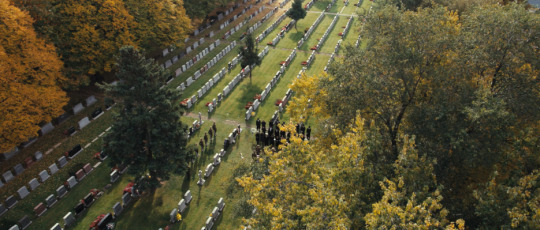
Late Nov / Early Dec, 1954 - Tim enlists in the army
based on army application: birthdate 6/6/30, age: 24 years, 6 months

Late Nov / Early Dec, 1954 - Hawk/Tim last meeting in the tower
based on the radio program Tim is listening to, which says, "Chief Counsel Roy Cohn has resigned from the committee. And Senator McCarthy, his approval ratings plummeting, faces censure or even expulsion from the Senate."
Tim leaves for Fort Dix, for training, but is later stationed at Fort Polk, in Vernon Parish, LA. (thanks, @jesterlesbian!)

December 2, 1954 - the Senate censures McCarthy.
Summer or Fall 1956? - Tim's letter (that lucy burns) (ep 6)
Flashbacks, for context:
"Since he's giving up his apartment, Hawk insists on having a lair in the woods." // "I'm surprised that he finally agreed."
Lucy lets contractor go. // "Give me a baby."
Hawk is reading the Bristol Daily Courier, a paper located in Bristol, PA, a town in Bucks County, outside Philadelphia. I can't find any info on the one headline I can read though ("Heath Carlson breaks arws deadlock, locals proud"), so can't date this properly.

Lucy cleaning out Hawk's apartment, finds paperweight, sees Tim drop off letter.
"I went into the Army to get away from you. I thought time and distance would help. But it hasn't." If Tim sends the letter in summer 1956, it's been a year and a half since he enlisted.
Biggest question here: did lucy ask for a baby before or after she read Tim's letter??? the flashbacks don't answer this definitively.
October, 1956? - Lucy becomes pregnant with Jackson (see note under April 1957)
October 23 – November 4, 1956 - Hungarian Revolution of 1956
October 23, 1956 - April 30, 1957 - Hungarian Refugee Crisis
November 8, 1956 - Operation Safe Haven commences
President Eisenhower declared that 5,000 Hungarians would be awarded visa numbers remaining under the 1953 Refugee Relief Act
Spring 1957? - Tim sends telegram. It looks like 05-??-???? to me, which doesn't really make sense if McCarthy died on May 2nd, but it's hard to make out. or maybe telegrams used the date format dd-mm-yyyy.

April 1957? - Tim/Hawk first meeting, Lucy at least 5 (or 6? or 7?) months pregnant
You should feel your baby's first movements, called "quickening," between weeks 16 and 25 of your pregnancy. If this is your first pregnancy, you may not feel your baby move until closer to 25 weeks.
25 weeks ~= 6 months, and it still seems novel to her, so let's say she's approx. 6 months pregnant here.


May 2, 1957 - Joe McCarthy dies.
May 6, 1957 - McCarthy's funeral. Tim's first visit to Hawk's apartment (ep 8)
June 6, 1957 - Tim turns 27.
June or July, 1957 - Jackson born (based on dates above)

1958? - Kimberly is born. (estimated bc she looks the same age or older than Jackson, so assuming she's a year younger at most.)
August, 1965 - President Johnson signs a law making it a federal crime to destroy or mutilate [draft] cards.
October 15, 1965 -David Miller publicly burns his draft card, becoming the first person to be prosecuted under that law and a symbol of the growing movement against the war.
May 17, 1968 - the Catonsville Nine took 378 draft files from the draft board office in Catonsville, Maryland and burned them in the parking lot. (inspo for Tim & co. thanks @brokendrums!)
November 1968 - ep 6. Hawk is 48-9, Tim is 38, Jackson is 11.
based on this newspaper screenshot when Hawk is talking to Marcus on the phone about Tim

November 1968 - May 1970 (earliest) - Tim in prison. (he says in ep 7 he was in prison for a year and a half. this assumes he went to prison right away, but it could have been several months later if he was awaiting trial/sentencing.)
1970? - After prison, Tim moves to San Francisco and gets his counseling degree.
Mid-late 1970s - Tim earns his C-SWCM qualifications, requiring:
A Bachelor’s degree in social work from a graduate program accredited by the Council on Social Work Education
Documentation of at least three (3) years and 4,500 hours of paid, supervised, post-BSW professional experience in an organization or agency that provides case management services
Current state BSW-level license or an ASWB BSW-level exam passing score.
nb. because Tim already had his bachelors (from Fordham, majoring in history), I could see him entering a much-accelerated BSW program, transfering a lot of credits from his previous degree. That would give him maybe 2 more years of university, plus the required 3 years of post-BSW work = 5 years minimum before he earns that business card.
February 4, 1977 - Fleetwood Mac's album Rumours is released, including the 1970s Tim/Hawk anthem, Go Your Own Way
October, 1978 - Jackson dies

November 27, 1978 - Harvey Milk assassinated
May 20-22, 1979 - Tim on Fire Island (ep 7). Hawk is 59 or 60, Tim is 48, about to turn 49.
May 22, 1979 - Harvey Milk's (posthumous) 49th birthday (celebrated in ep 7)
1986 - ep 8
how long was Hawk in San Francisco? Timelines for the events below may be fudged in the show, bc I doubt he was there for 5 months.
March, 1986 - Roy Cohn's 60 Minutes interview, which the gang watches in ep 4.
April 15, 1986 - US bombs Libya. in the first episode you can hear reference to this on the radio, before Hawk leaves for San Francisco. (thanks @aliceinhorrorland93!)
July 27, 1986 - In California, Gov. George Deukmejian vetoes a bill that would have defined AIDS as a physical handicap calling for entitlement to protection under the state's civil rights laws.
August 2, 1986 - Roy Cohn dies (ep 8)
Late 1986? - the fundraising gala that Tim crashes, shortly after Cohn's death.
September 1986 - The State Legislature has passed another bill [in addition to the one vetoed on July 27]. Mr. Deukmejian, a Republican running for re-election, has indicated that he will probably veto the bill. (nb, this is likely the bill that Tim & co want to pressure the governor to sign).
October 11, 1987 - AIDS memorial quilt first displayed (ep 8)
--
this was a collaborative effort! many thanks to @ishipallthings for many of these details, as well as @startagainbuttercup , @alorchik, @itsalinh and others in the FT discord!
#fellow travelers#timeline#reference#i made this as comprehensive as i could but i would LOVE feedback/corrections#esp re: anything in 1956-1957 era#jackson's birth? and the date of that letter???
286 notes
·
View notes
Note
hello! i stumbled across your blog very recently and am curious as to what the tag v13 means- sorry if you’ve answered this before, i’m on mobile!
fallout is based on wasteland. wasteland is based on a canticle for liebowitz. a canticle for liebowitz is about catholics bickering about fiction in the dust of america for hundreds and hundreds of years. it is about religion and the concept of a dark age

VAULT 13: A GURPS Post-Nuclear Adventure was the ip's name in the conceptual phase. the very first VAULT 13 worldbuilding pitch doc--a timeline--spoke of a Dark God, a term deployed throughout Fallout but only contextualized in the fallout bible, which does not actually use the term. Laura has a special voiced line just for Tell Me About: Dark,God: "The what?"


Project V-13 was interplay's original Fallout Online, which was cancelled by the publisher bethesda like fifteen years ago now.
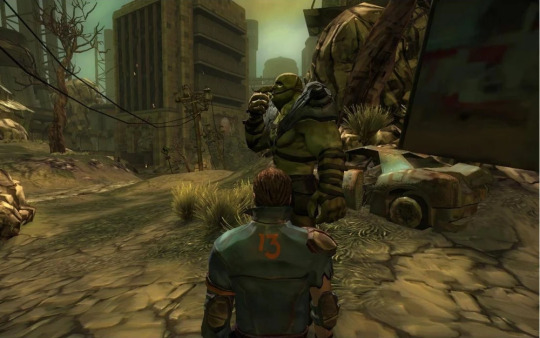
pylon v-13 is a location at the end of Fallout 76's map where a character from Project V-13 built a time portal and disappeared. it is the most cursed location in the game

by accepting its premise, we arrive at v13 lore, the rejection of canon in light of canonical time travel and multiverse, which has always been a thing, and is also literally a joke. it's the realization that fallout is defined by creativity, interpretation, expression, and argument. it is the understanding that non-canon lore and controversial lore are basic and vital pieces of the history of the setting. and it's the begrudging admission that fallout is a cultural legend, irreplaceable and beyond anyone's control. fallout makes sense to everyone and demands our imagination. it always will

enabled by all the most hated and rejected lore, my characters are time-travelling supervillains who know the things i know, and scour the wastelands endlessly to expand their knowledge. this diegetic headspace and cosmology is a lens i use to explore the concepts of conspiracy theory, paranormal thought, religion, and occultism, all of which i am deeply critical of. i have learned a lot about these matters because i was able to fully engage with them in the context of fallout.
also the talking deathclaws lived in vault 13 and the courier carries the vault 13 canteen. there's also some esoteric shit about 13 high priests, 13 ghouls, and 13 landmarks. it's a pretty specific throughline. it's there if you're mad enough to look for it. and we'll never really know what it means if anything
thats what it means. to me
another thing i always say is. any setting where humans don't see ghosts is a strange fantasy. humans have always seen ghosts. don't mean ghosts are real. just means folks see ghosts. and at some point you gotta talk about it
hope this isnt complete nonsense
193 notes
·
View notes
Text
The DnD Lore Problem - Accessibility and Characters (and how BG3 might not help)
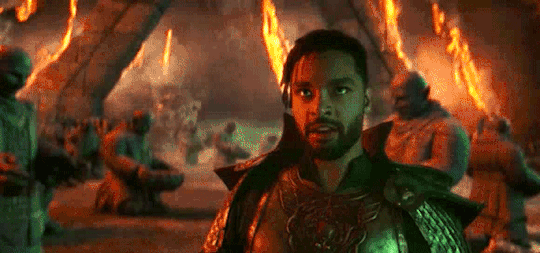
You know what? I am gonna talk about DnD Lore and the accessibility of that lore. I talked about this exessively before. But to summarize that long blog very shortly:
Wizards of the Coasts currently makes the mistake of putting basically most DnD Lore behind a paywall, rather than offering official ressources. This leads to a lot of tables actually playing with their original worlds, rather than Toril/Faerûn, which in turn also means, that they are not spending money on official products. While my anti-capitalist ass things that the lore should be accessible just so that people can enjoy it, I also think that this inaccessibility actually costs WotC A LOT OF MONEY.
Today I want to talk about another aspect of this inaccessibility, that is kinda linked to some of the stuff I talked about before, but also is linked to the things WotC is currently not doing in terms of both Honor Among Thieves and Baldur's Gate 3. A thing, that also might not quite work with BG3, though.
See, the core problem of this inaccessibility is, that a) there is no official place where you can just get base information about the world and the timeline, b) this world has grown organically for about half a century, which lead to clutter, but also to the fact that things are at times showing their age.
I might actually make a post on the gods and religion in the world at some other point - but for now let me talk about something else: Extended universes and access points.
The Problem with Extended Universes
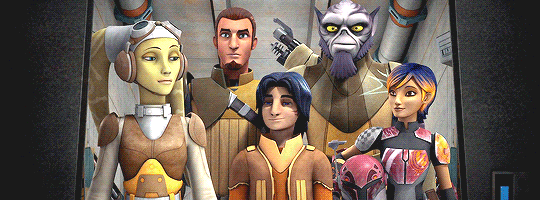
Okay, let's talk about how a lot of the big franchises for the longest time have told their meta stories - including DnD - and how it kinda struggles to find its audience. The extended universe.
I am frankly not entirely sure what franchise has started this. I am assuming it was Star Trek? But that is just a guess. But at some point in the 60s oder 70s someone had the idea that: "Hey, we could totally give the fans more to chew on by making official tie-in comics and novels!"
And that was how it worked for very long. Like a lot of the big franchises had at times around 10 novels and comics (if not more) releasing per year that would just explore other parts of the universe and allow the very engaged fans to... well, learn more about the world. Now, I am not going to talk about all the drama connected to the Star Wars stuff, but if you know, you know.
DnD did this too. (As did a lot of the big TTRPG systems, like Shadowrun and WoD as well.) Having a lot of tie in stuff - in the case of DnD mostly novels - that told more stories on the world and also established like some big player characters within the world. Elminster Aumar is probably one of the best examples here.
Those established some characters that play a big role within the world and also told just more stories of those big world changing events. In the recent DnD history that would be stuff like the Time of Troubles, the Spellplague and the Second Sundering.
Now, here we have one big issue. And one issue where I am not entirely certain where it arose from. But the fact is: In recent years, people invest way less into those kind of books. This is just a fact.
It is the reason why those big universes went from publishing like ten novels a year to often not more than three. We saw that in the failure of the extended Universe Disney tried to pull off for Pirates of the Caribbean (though I will still maintain that another big problem was that they barely marketed that at all - hi, everyone, who did not know there were extended universe novels for PotC). We also saw that with League of Legends, who really, really tried to tell a lot more stories with short stories and then also some novels set in Runeterra, before finally giving up, because most people didn't care.
In terms of Dungeons & Dragons I can totally see that a lot of people will also say: "I do not care what some other people's characters do within the world." Buuuuuut...
Stories actually can help you understand the world. Which brings me to...
The Elminster Problem
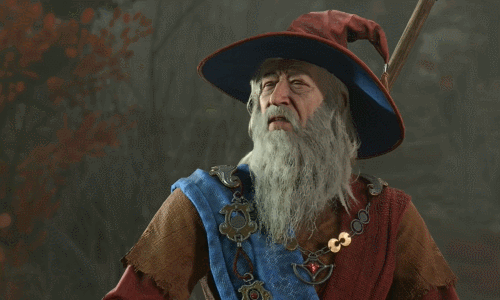
Okay, I do not know how to put this, but... If you look at the novels coming out for DnD literally half of them focus on either Elminster Aumar or Drizzt Do'Urden. Characters that have pretty much been around since the very beginning and. Look, I don't know how to put it but... It shows.
I am currently reading some of the newer novels and the fact is, that they do not really feel like fantasy books from the 2010s and 2020s. Because Elminster and Drizzt are very clearly characters originating in a very different time when stories were told very differently.
I mean, just look at Elminster. He is a wanna-be Gandalf character. He is from the early, early days of fantasy and... Look, I personally just really am unable to identify with a character like this.
And while Drizzt is a bit better as a character, but even he... How to put this delicately? They are both very much characters written by white cishet men for white cishet men. There, I said it.
I am noticing this a lot with reading Salvatore's books currently. Like, female characters are not overly sexualized, which is a plus. But they also very much exist most of the time in service to a man or at least in relation to a man. There is not a lot of female characters running around that have their own agency.
Which kinda leads to another thing. I actually saw this one brought up by one of those very cliché nerdy Youtube channels talking on DnD, who recognized the problem as well: There are basically two large groups of DnD players who barely intersect. One is the cliché nerds, the other is a largely queer and largely diverse group. And the youtube guy, who was very in the white cishet nerd group, suspected that actually the later group makes up more of the player base by now.
Buuuut... that is also the group who really do not get catered to by the canon lore so far. That was until 2023 with DnD:HAT and BG3 - both catering actually a lot to those groups.
Honor Among Thieves and the undermarketed books
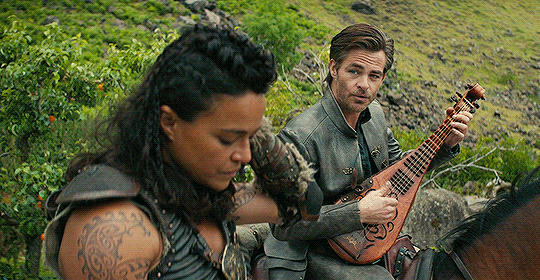
Okay, here is the thing: Honor Among Thieves had two novelizations (one for young readers, one for older readers) and two tie-in novels. One featuring Edgin, Holga, Forge and Simon before the stuff with Sofina went down. And the other featuring Simon and Doric taking place at the time while Ed and Holga are in prison.
I am honest: I really, really liked the Ed and Holga novel. It was super cute and charming and really gives a better understanding of the characters.
But of course once again there is the thing: The books - just like the Pirates of the Caribbean books - were super undermarketed. Like, most people I know off do not even know that there were books released. Heck, even within the actual active fandom there are again and again people who will be surprised that those books exist.
And... I actually also think that the books waste one big ass opportunity, by not at all tying into the broader lore. They are super self-contained.
And that is actually just a waste. Because the place were Edgin lived in? Yeah, that place was super affected by the Second Sundering. Heck, that might have had to do something with his troubles.
Why is that an issue? Well, because... there was not a lot going on there that was inviting you to further interact with the world and learn more abotu what is happening. For once, again, because I think it is a super fun and interesting world. But also, because... WotC wants to make money and is so bad at it, that it really boggles my mind.
See, here is the thing: They could've used those characters - that really are fun and sympathetic characters - to create an accesspoint into that world.
Alright, so what about Baldur's Gate 3?
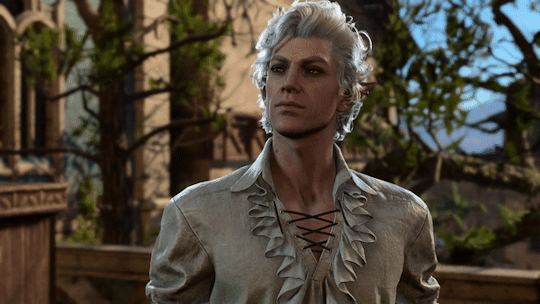
Which brings me to Baldur's Gate 3 and the thing that a lot of people have noticed: The other Baldur's Gate games - as well as some of the other games releasing around 2000 - had their own tie-in novels going into the characters, their background, but also what they were doing in the future.
Something that so far BG3 has not done, which some fans have already critized. Because a lot of people have actually gotten really invested into those characters. A lot of the kind of people especially who so far are underserved by a lot of the tie-in stuff: Queer and generally diverse audiences.
Like, I think there would be a lot of people, who totally would read a novel, about...
Astarion getting drawn into some sort of political intrigue in Baldur's Gate while serving Cazador
Karlach's time in Avernus
Some Adventure Wyll got dragged into while being the Blade of the Frontier.
Shadowheart going onto a mission for Shar (maybe together with Nocturne)
Whatever Gale was doing during the Second Sundering
Lae'zel's youth among the Githyanki
The Dark Urge and Gortash starting up the entire conspiracy
... whatever Halsin had been up to in his long live
Heck, people would eat that stuff up. And you could not only use it to worldbuild but also once more create some access into the world and what happened there. And they are kinda wasting a lot of potential by not bringing out those novels.
Of course, there is one big problem: BG3 makes it kinda hard to write about anything happening after the ending. Because as it is right now, someone is gonna be pissed if a novel set after the game does not go with the decision for a character they go for. Like, Ascended Astarion fans are gonna be pissed, if they go with Spawn Astarion - and the other way around. Same goes with every other character where you have those big decisions happening.
This is something they will have to tackle eventually if they plan on doing something with the characters in the future (no matter if we are talking Larian or WotC), but it is definitely an issue that just arises from the structure of the game.
Bonus of course is, that you just cannot define a canonical Tav. But without a Tav, you also gotta act as if the story of the game happened without a Tav, which still is not ideal. I am honestly not sure with how they are gonna deal with this on the long run.
Access via Characters

Alright, but what is the actual issue here?
Well, basically there are two hurdles to overcome for the accessibility of the lore. The first is the physical accessibility - aka, what I talked about in the last long blog post. The second meanwhile is more related to making the lore engaging. And that happens through characters.
It is for me what happened last year. I actually tried to engage with the lore as the movie came out - but only when BG3, that tied a lot more into the actual lore was released I actually found proper access to the lore. Because I had concrete things I could now look for because the game hinted at so much both through characters and major story events happening.
Here is the thing: If you just have the lore on its own, it is about as engaging as reading a history book. Sure, as your local history nerd I find reading history books fun, but most people really do not want to read a history book to engage with a hobby.
People will however engage with stories and characters that interest them. Which is where we get back to the thing I talked about at the beginning: Right now most canonical novels and stories still cater to an audience that is male, cishet, white and also, let's be frank, definitely over 30 years old. Leaving behind a lot of potential fans that theoretically make up a big part of the player-base, but actually do not engage a lot with the lore for this exact reason.
Look. DnD right now is fairly close to being an actual mainstream hobby, due to the recent proliferation of formerly nerdy stuff. And yet WotC is bleeding money, especially in regards of DnD.
If you ask me, sure... DnD should go into public domain. But it doesn't. And given that there are so many creative, skilled people working on this - no matter how dumb Hasbro is and how shitty of an employer they are - I actually do want them to succeed. I have really become engaged with this world now. And I think it is a pity that they clearly do not know how to market this stuff.
#dungeons & dragons#baldurs gate 3#dnd#baldur's gate 3#bg3#dungeons & dragons: honor among thieves#honor among thieves#dnd:hat#tie in#novels#dnd lore#accessibility#astarion#karlach#shadowheart#wyll ravengard#halsin#gale dekarios#lae'zel#elminster#drizzt do'urden#edgin darvis#holga kilgore#wizards of the coast#wotc#star wars#league of legends
148 notes
·
View notes
Text
one piece is so good and i wish people would stop being scared of how long it is. the story is just a silly pirate adventure thats going to rip your heart out and stomp it into the ground. its contains an expansive world with different governments, religions, and ways of life that expand deep under the ocean all the way to the stars. there’s a timeline that spans almost a 1000 years with a gap for forgotten and forbidden history. there are over a 1000 characters and so many get the privileged of really getting fleshed out. there is so much to watch or read and we’re 25 years into the story and you can still catch up and be there for the final stretch of the journey and be there for when the big mysteries are answered
898 notes
·
View notes
Note
When exactly did "The Man" go into the khert and do all this stuff?
It's not relevant. While the creation of Sette and Jac (as a concept, with a set number of iterations) has some temporal relevance, the alteration to the khert was in execution an alteration to all of the world and humanity. The date of the alteration isn't important because the alteration altered the entire instantiation. It did not create a branching timeline. It replaced the timeline.
I feel it's important to be very loose with this stuff because I don't want a readership that's been following for 2000 pages to have to suddenly try to keep track of dates or alternate histories. I let Lady Ilganyag tell her story to Sette in very simple language with all the corners rounded off. That was for the reader, too. The mechanics are there - as far as I can tell they work just fine within this system - and we can talk about them here, if you want, but they're not really what I'd have a reader take away from this. What really gets my juices flowing is the idea of a human being getting into the gears of the world and thinking he can manifest his religion. It's a mega blown up version of Sette papering over her crappy trauma with make-believe.
And meanwhile this ancient harpie is over in the corner shuffling her talons and saying, uh, maybe don't, but no one's going to listen to her. She stands around watching the grass grow and thinks that's magical. Humans don't got time for natural selection!
I also really was charmed by the idea of someone making that giant change, carrying out this great humanitarian enterprise that he believed would evolve his peoples towards immortality, and then completely forgetting he did it because he boneheadedly also changed himself. And none of it even worked! It's a tragedy but also ridiculous but also kind of terrifying. He wrote over his original self. In trying to save everyone he loved and whose souls he wanted to see again, he obliterated all of them with new versions. Maybe some of them are identical, but it doesn't even matter. And he doesn't even know he did it. No one in existence even knows it ever happened but Lady Ilganyag.
It's spooky. But only if you think about it too hard.
70 notes
·
View notes